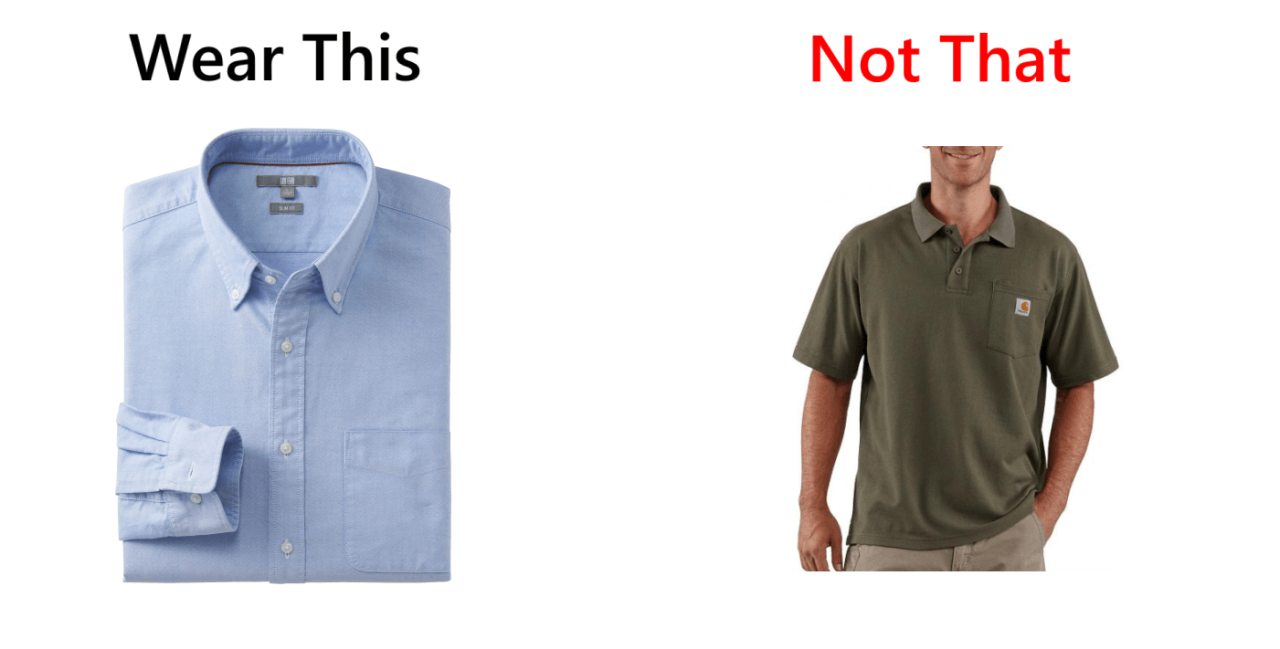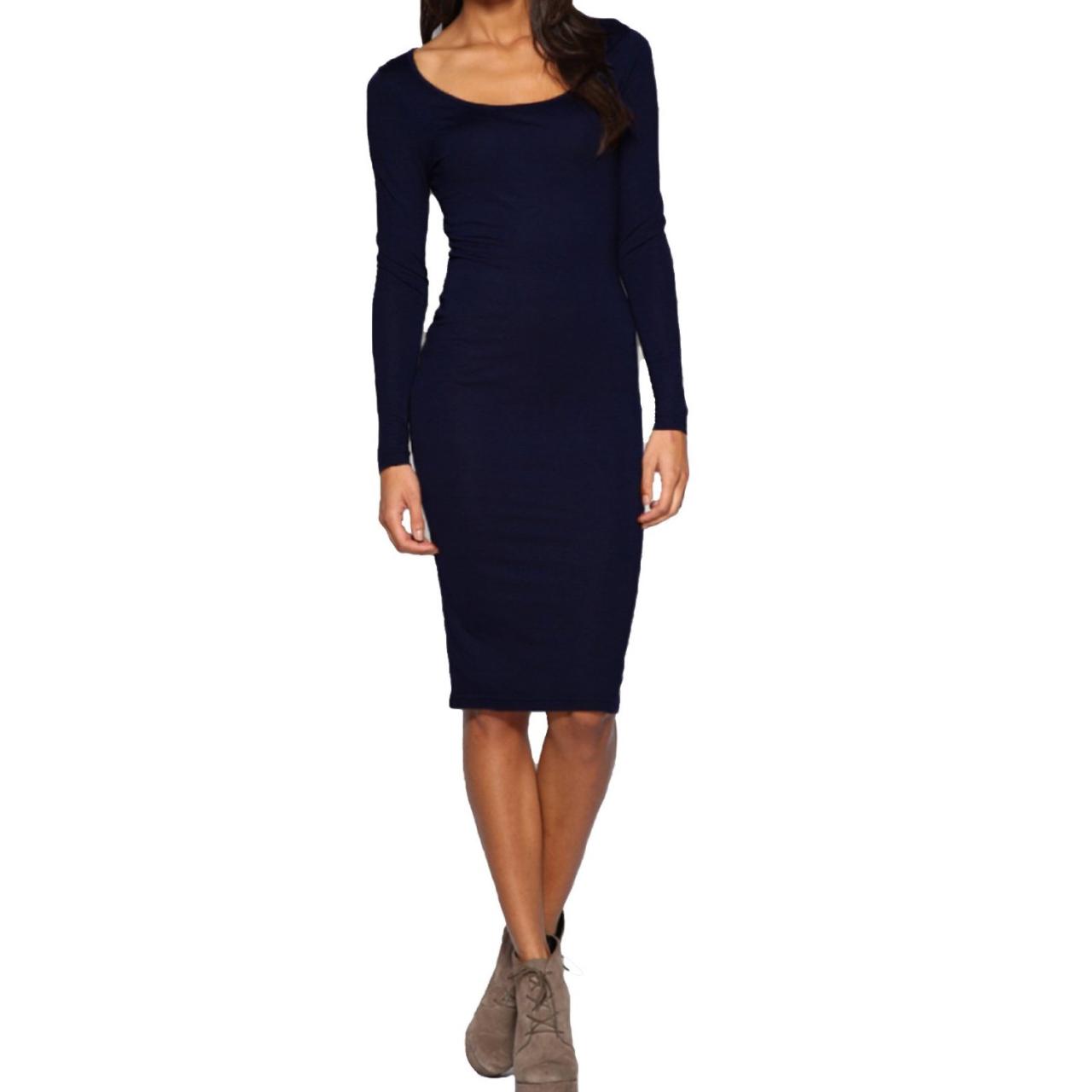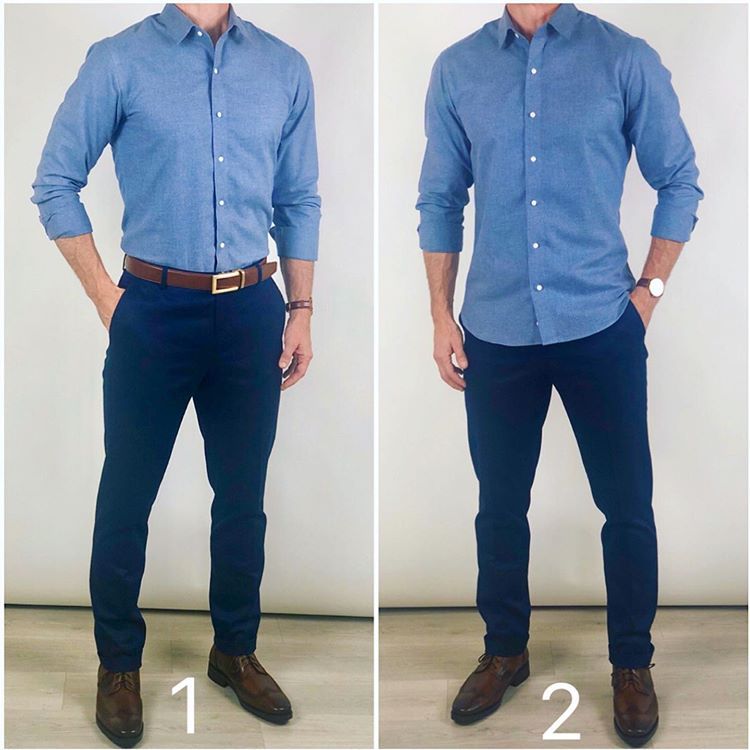Is an untucked shirt business casual? The answer, surprisingly, isn’t a simple yes or no. Navigating the nuances of business casual dress codes often requires a deeper understanding of context, culture, and personal style. This guide delves into the complexities of untucked shirts in professional settings, exploring when this style choice works and when it falls flat. We’ll examine different shirt styles, the influence of accompanying garments, and the impact of various workplace environments.
From the historical context of the untucked shirt to modern interpretations, we’ll dissect the perceptions surrounding this often-debated style. We’ll provide clear guidelines, practical examples, and visual aids to help you confidently navigate the world of business casual attire, even when an untucked shirt is in question.
Defining “Business Casual”

Business casual is a dress code that aims to strike a balance between professional and relaxed attire. It’s a flexible standard, allowing for individual expression while maintaining a level of formality appropriate for a workplace setting. However, the specifics can be surprisingly nuanced and vary considerably depending on context.
The generally accepted parameters of business casual typically involve neat, presentable clothing that avoids overly casual elements. This usually means avoiding ripped jeans, graphic tees, athletic wear, and excessively revealing clothing. Instead, think khakis or chinos, button-down shirts (tucked or untucked, depending on the context), blouses, sweaters, and blazers. Clean, polished shoes are generally expected, while sandals or flip-flops are usually considered inappropriate. Accessories should be understated and professional. The overall impression should be one of competence and approachability.
Variations in Business Casual Dress Codes
Business casual interpretations differ significantly across industries and company cultures. A tech startup might embrace a more relaxed approach, with jeans and polo shirts being acceptable, while a financial institution might adhere to a stricter interpretation, favoring more traditional business attire, even within the business casual framework. Similarly, a company’s internal culture plays a crucial role. Some organizations have explicitly defined business casual guidelines, while others leave more room for individual interpretation, often relying on employees to use good judgment and observe the dress of their colleagues and superiors. For example, a law firm might lean towards more formal business casual, emphasizing tailored clothing and polished shoes, whereas a design agency might permit more creative expression within the overall business casual framework, incorporating more unique clothing items or accessories.
Tucked vs. Untucked Shirts in Business Casual
The question of whether to tuck in a shirt within a business casual context is often a point of contention. Generally, tucked-in shirts convey a more formal impression, aligning more closely with traditional business attire. Untucked shirts, particularly when paired with chinos or more casual trousers, suggest a more relaxed approach. The appropriateness of each depends heavily on the specific workplace and the overall desired level of formality. In more conservative environments, a tucked-in shirt is generally preferred, conveying a sense of professionalism and attention to detail. In more relaxed settings, an untucked shirt might be acceptable, particularly if it’s a well-fitting, collared shirt paired with appropriate trousers. The fit of the shirt itself also plays a role; a neatly fitting untucked shirt can still look professional, whereas a baggy or ill-fitting untucked shirt will likely appear sloppy. Ultimately, observing the dress code of senior colleagues and managers can offer valuable insight into the accepted norms within a particular organization.
The Untucked Shirt

The untucked shirt, once a rebellious statement against corporate formality, has navigated a complex path within the business world. Its acceptance, or lack thereof, is deeply intertwined with evolving cultural norms, industry standards, and individual workplace environments. Understanding its nuances is crucial for navigating the often-subtle landscape of business casual dress.
The shift towards more relaxed professional attire has undeniably contributed to the rise of the untucked shirt in business casual settings. However, its appropriateness remains a matter of context, dependent on factors ranging from company culture to the specific occasion. This section explores the historical context of the untucked shirt, provides examples of its appropriate use, and examines potential downsides associated with this sartorial choice.
Historical Context of the Untucked Shirt in Professional Settings, Is an untucked shirt business casual
Historically, the tucked-in shirt represented formality and adherence to traditional professional standards. The untucked shirt, in contrast, was often associated with rebellion against established norms, particularly in industries with stricter dress codes. The rise of casual Fridays and, subsequently, the broader adoption of business casual attire, significantly altered this perception. The shift reflects a broader societal trend towards less rigid formality in many aspects of life, impacting workplace dress codes as well. This evolution hasn’t been uniform, however; some industries and companies maintain stricter adherence to traditional dress standards, rendering the untucked shirt inappropriate.
Situations Where an Untucked Shirt is Appropriate in Business Casual
An untucked shirt can be perfectly acceptable in various business casual scenarios. For instance, a neatly pressed, well-fitting button-down shirt worn with tailored chinos or dark-wash jeans could be suitable for a less formal meeting, a casual Friday at the office, or a team-building event outside of the traditional office setting. The key is to ensure the overall look remains polished and professional. Similarly, a well-chosen polo shirt, in a solid color or subtle pattern, can be a suitable option for certain less formal business environments, especially in warmer climates or industries where a more relaxed atmosphere is the norm. Context is paramount; a tech startup might embrace untucked shirts more readily than a conservative financial institution.
Drawbacks and Negative Perceptions of an Untucked Shirt in Business Casual
Despite its increasing acceptance, the untucked shirt still carries potential drawbacks in business casual settings. A poorly fitting shirt, wrinkled fabric, or an overly casual shirt style can project an unprofessional image, undermining credibility and potentially impacting perceptions of competence. Furthermore, the untucked shirt might be deemed inappropriate in client meetings or presentations, particularly with more traditional clients or in more formal industries like finance or law. The potential for the shirt to appear sloppy or unkempt is a significant concern. Ultimately, the success of wearing an untucked shirt hinges on ensuring the overall appearance is sharp, clean, and appropriate for the specific context.
Factors Influencing Appropriateness
The suitability of an untucked shirt in a business casual setting hinges on several interacting factors. While the overall aim is to maintain a professional yet relaxed appearance, the specific choices made regarding shirt style, fabric, and accompanying garments significantly impact the final impression. Careful consideration of these elements ensures a look that is both appropriate and stylish.
Shirt Style and Fabric Influence
The style and fabric of the shirt are primary determinants of its appropriateness when untucked. A crisp, well-fitting button-down Oxford cloth shirt, for example, can often look polished even when left untucked, provided the length is appropriate and the fit is not too baggy. Conversely, a flimsy, poorly fitting shirt, regardless of style, will likely appear sloppy and unprofessional. The fabric’s weight and drape also play a crucial role; heavier fabrics tend to hang better and create a more structured look than lighter, more delicate ones.
Shirt Style Appropriateness in Business Casual
The following table compares different shirt styles and their suitability when untucked for business casual wear.
| Shirt Style | Fabric | Appropriate Untucked? | Overall Impression |
|---|---|---|---|
| Button-down Oxford | Cotton Oxford Cloth | Generally Yes | Classic, professional, provided it fits well and is not too long. |
| Polo Shirt | Piqué Cotton | Yes, but with caveats | More casual; appropriateness depends heavily on the quality, fit, and overall outfit. Avoid overly bright colors or logos. |
| Henley Shirt | Cotton, Linen blends | Potentially, depending on the context | Can work in more relaxed business casual settings; requires careful consideration of the overall outfit and accessories. A higher-quality fabric is key. |
| T-Shirt (with a tailored cut) | High-quality cotton or blends | Generally No, unless extremely high-quality and in a very specific context | Generally too informal for most business casual settings; might be acceptable in exceptionally relaxed environments. |
Impact of Trousers and Shoes
The choice of trousers and shoes significantly influences the overall impression of an untucked shirt. Pairing an untucked shirt with well-tailored chinos or dress trousers elevates the look, creating a more polished and professional appearance compared to wearing it with jeans or sweatpants. Similarly, selecting appropriate footwear is essential. Clean, well-maintained loafers, oxfords, or even stylish sneakers (depending on the overall context) will enhance the look, whereas worn-out or inappropriate footwear can detract from the overall impression. The overall goal is balance; the shirt, trousers, and shoes should work together harmoniously to create a cohesive and professional business casual ensemble.
Situational Considerations
The appropriateness of an untucked shirt in a business casual environment hinges heavily on situational factors. Understanding the nuances of industry, workplace culture, and specific events is crucial for making informed decisions about attire. Ignoring these contextual clues can lead to misinterpretations and potentially negative impressions.
The following scenarios illustrate how the acceptability of an untucked shirt varies across different contexts within a business casual framework. Consider these examples as guidelines, recognizing that individual workplaces may have their own specific dress codes that supersede these general observations.
Industry Variations
Different industries have varying expectations regarding professional attire. Some industries lean towards a more formal business casual style, while others embrace a more relaxed approach. This directly impacts the acceptability of an untucked shirt.
- Acceptable: A tech startup known for its casual and collaborative work environment might readily accept untucked shirts, particularly for team meetings or casual Friday events. The focus is on comfort and productivity.
- Unacceptable: A financial institution or law firm, on the other hand, might generally prefer a more polished look, even within a business casual setting. An untucked shirt could be perceived as unprofessional during client meetings or important internal presentations.
Workplace Culture
Even within the same industry, the specific culture of a workplace plays a significant role in determining appropriate attire. Observe the dress habits of your colleagues and superiors to gauge the accepted norms.
- Acceptable: A company with a strong emphasis on teamwork and open communication might have a more relaxed dress code, where untucked shirts are common, especially during informal team lunches or brainstorming sessions.
- Unacceptable: A company with a more formal and hierarchical structure might maintain a stricter adherence to business casual guidelines, even in less formal settings. In such environments, an untucked shirt could be considered inappropriate, even if it’s not explicitly forbidden.
Event-Specific Appropriateness
The nature of a specific event dramatically influences the appropriateness of an untucked shirt. Formal events demand a higher level of formality in attire, whereas informal occasions allow for more relaxed choices.
- Acceptable: An informal team-building event, like a company picnic or happy hour, would likely be appropriate for an untucked shirt, assuming it’s clean and presentable. The focus is on camaraderie and relaxation.
- Unacceptable: A formal client presentation, an important board meeting, or a job interview would necessitate a more formal approach. Tucking in your shirt, even if business casual is the overall dress code, shows respect and professionalism in these high-stakes situations.
Meeting Context: Formal vs. Informal
The formality of a meeting is a critical factor. The level of formality directly influences the appropriateness of an untucked shirt. A highly formal meeting demands a more polished appearance.
- Acceptable: An informal team meeting to discuss project updates or brainstorm ideas might allow for an untucked shirt, especially if the team generally adopts a relaxed dress code.
- Unacceptable: A formal meeting with senior management, clients, or potential investors would require a more polished look. An untucked shirt might be perceived as unprofessional and detract from the seriousness of the occasion. A tucked-in shirt, or even a more formal business attire, would be a more appropriate choice.
Visual Representation: Is An Untucked Shirt Business Casual

Understanding the visual impact of an untucked shirt in a business casual setting is crucial for projecting the right image. A well-executed look communicates professionalism and style, while a poorly executed one can appear sloppy and unprofessional. The key lies in attention to detail and a cohesive understanding of the overall aesthetic.
Examples of Visually Appealing and Inappropriate Business Casual Outfits with Untucked Shirts
A visually appealing business casual outfit featuring an untucked shirt might consist of a dark-grey, slim-fit linen shirt with a subtle texture. The shirt’s sleeves are rolled up to the elbow, revealing a well-maintained watch. Paired with this are dark-wash, straight-leg chinos, impeccably pressed, and a pair of brown leather loafers without socks. A subtle leather belt in a coordinating brown completes the look. The overall impression is one of relaxed sophistication; the linen shirt provides texture and a casual feel, while the tailored trousers and shoes maintain a level of professionalism. The outfit is balanced and demonstrates a keen eye for detail.
Conversely, a visually unappealing and inappropriate outfit might include a brightly colored, oversized graphic t-shirt (untucked, naturally) paired with baggy cargo pants and worn-out sneakers. The shirt’s graphic is distracting and unprofessional, while the ill-fitting trousers and casual footwear clash with the business casual expectation. A baseball cap worn indoors further detracts from the overall image, creating a look that is far too casual and lacks the necessary polish. The lack of attention to fit and color coordination makes this a poor choice for a business casual setting. The inappropriate elements are the overly casual nature of the shirt and trousers, the poor fit, and the completely unsuitable footwear and accessories.
Textual Description of an Image Showcasing the Difference Between Well-Executed and Poorly Executed Untucked Shirt Looks
Imagine a split image. On the left, a man is depicted in the well-executed outfit described above: a slim-fitting, subtly textured linen shirt (untucked), dark-wash chinos, brown leather loafers, and a leather belt. His posture is confident and upright. His expression is professional and approachable. The overall impression is one of relaxed competence. On the right, the image shows a man in the poorly executed outfit: an oversized graphic t-shirt, baggy cargo pants, worn sneakers, and a baseball cap. His posture is slumped, and his expression is indifferent. The overall impression is one of carelessness and unprofessionalism. The contrast highlights the importance of thoughtful choices in clothing and accessories when aiming for a business casual look that incorporates an untucked shirt. The difference is stark, emphasizing the impact of fit, color coordination, and attention to detail.






